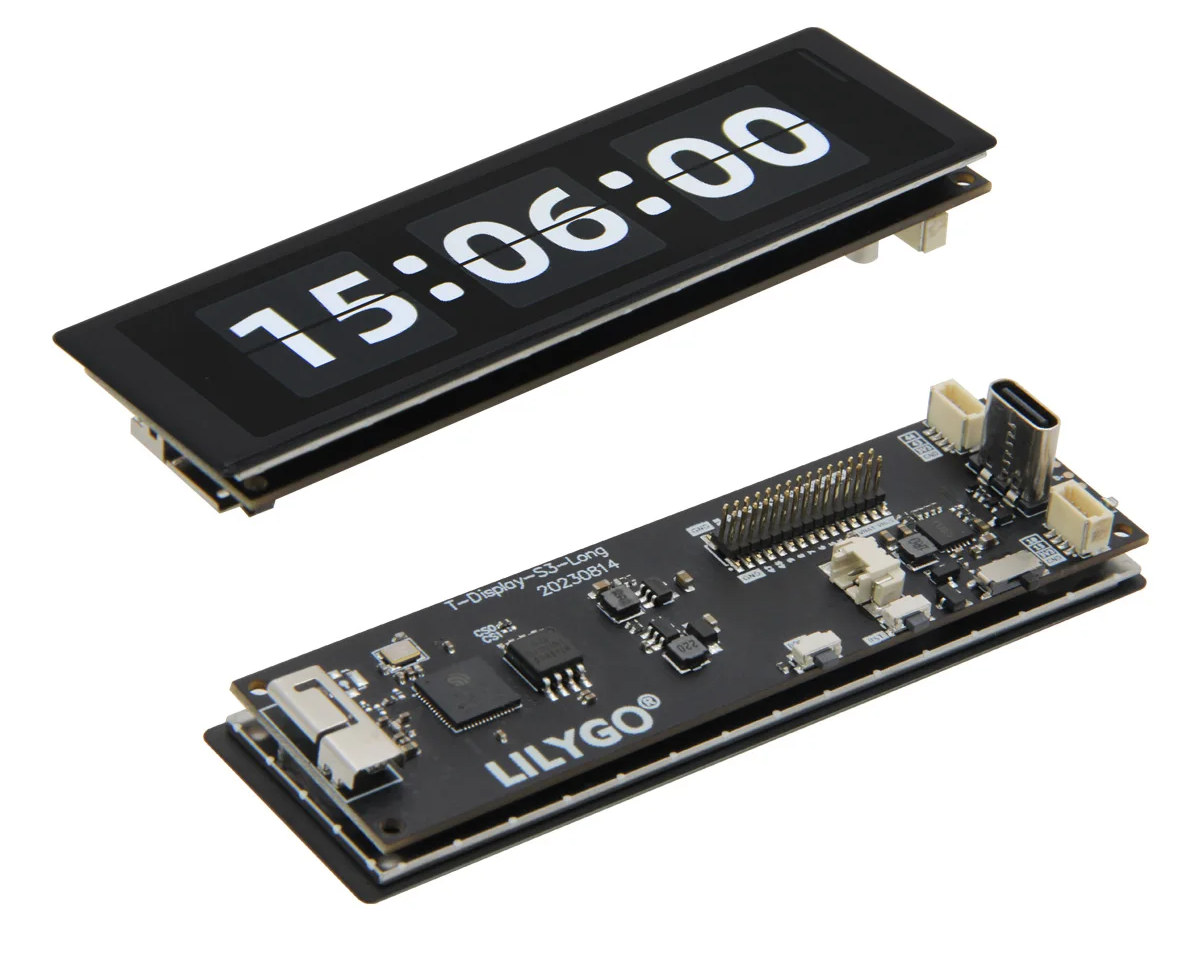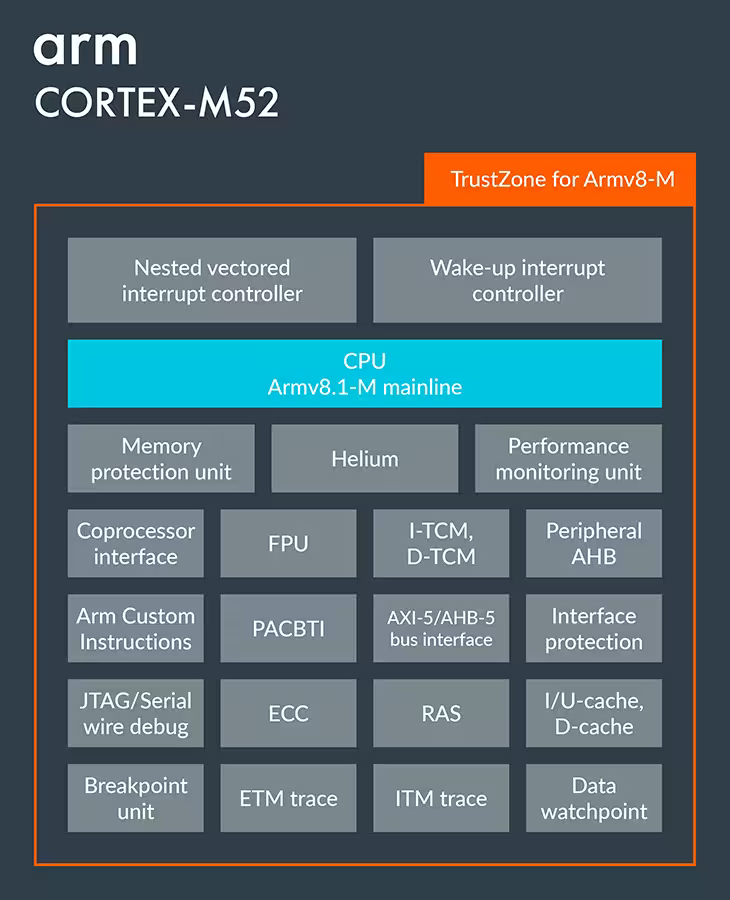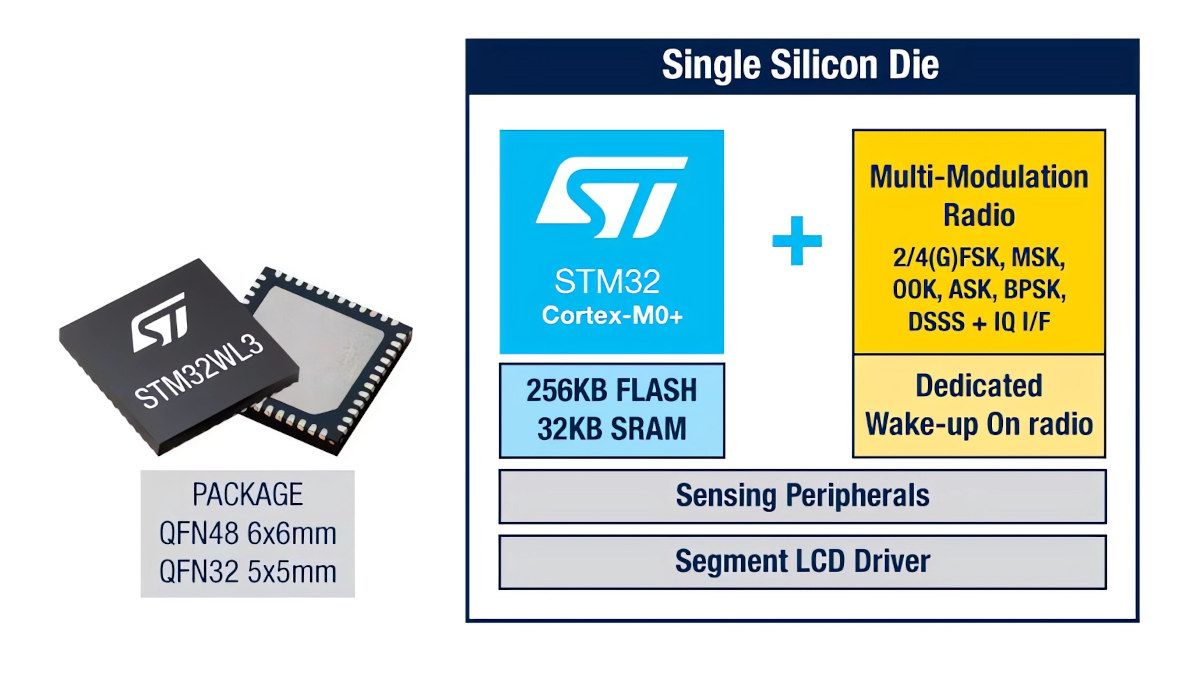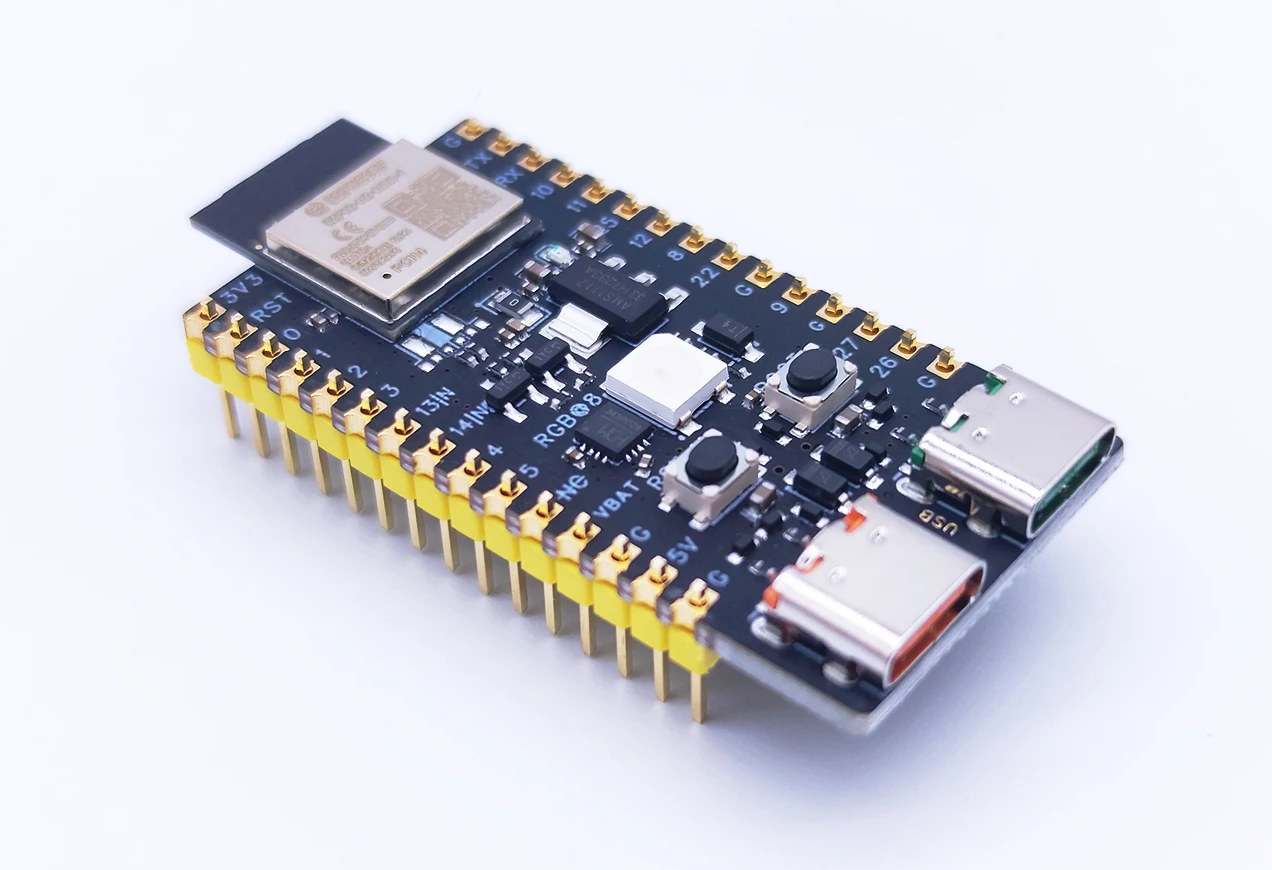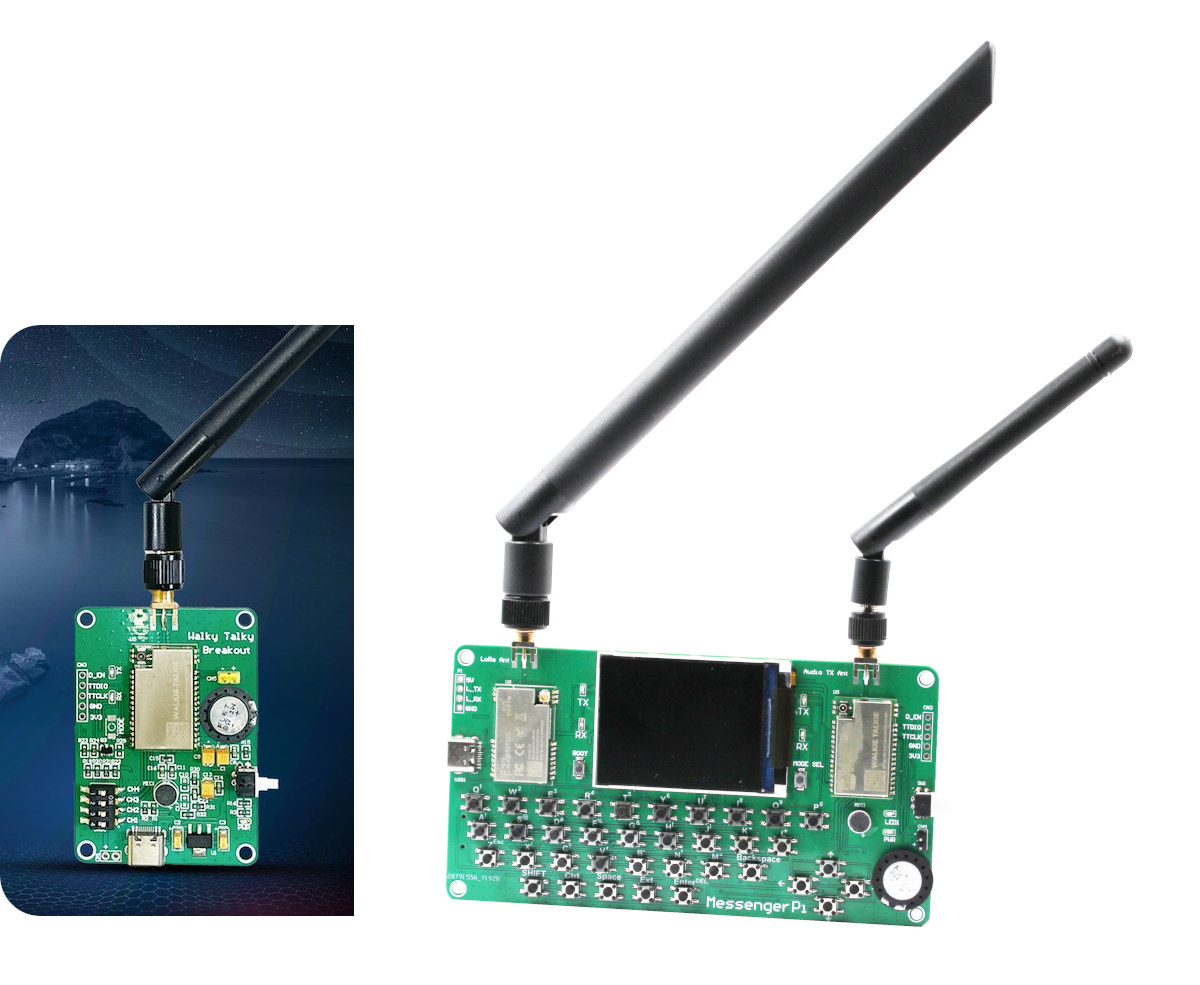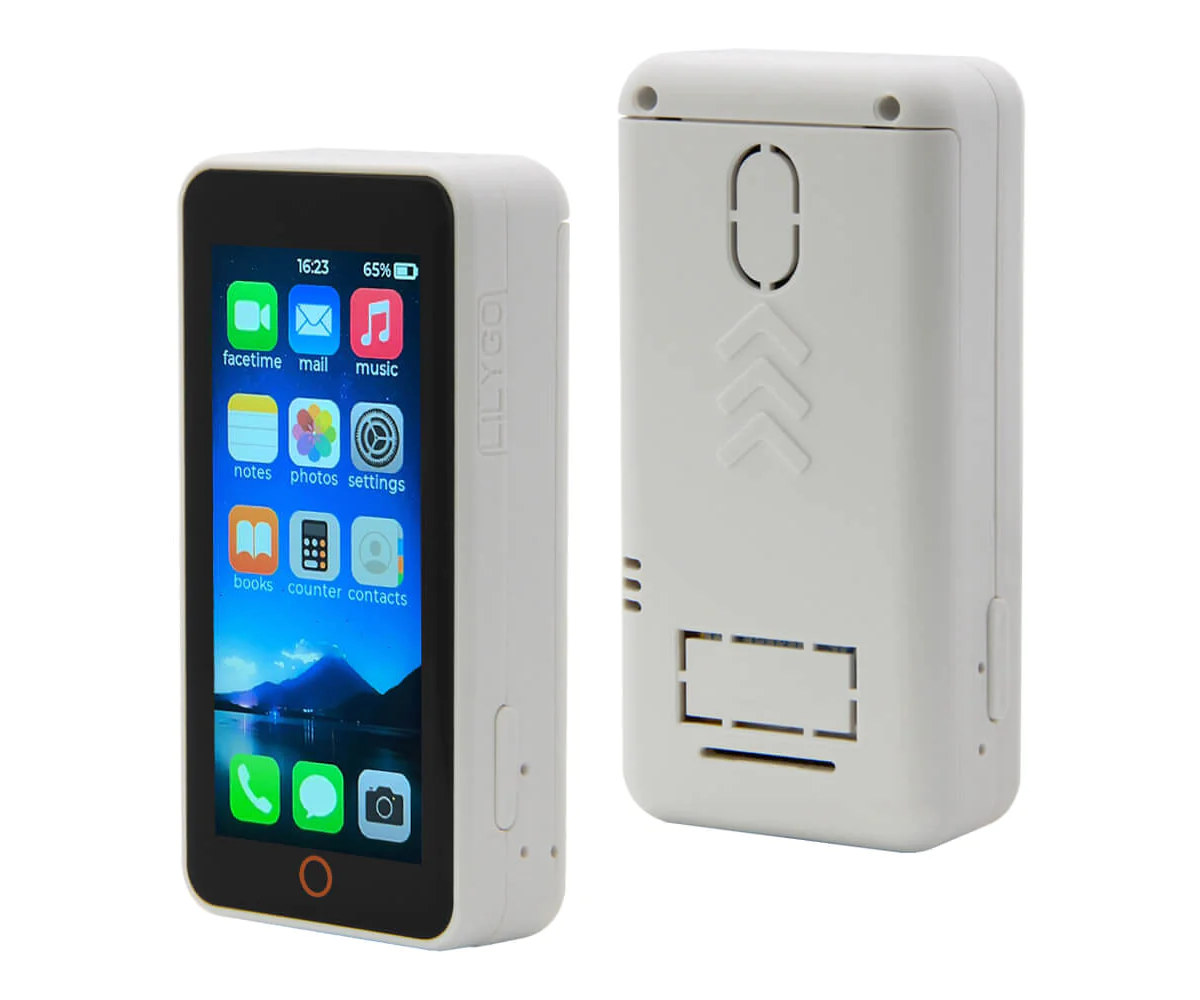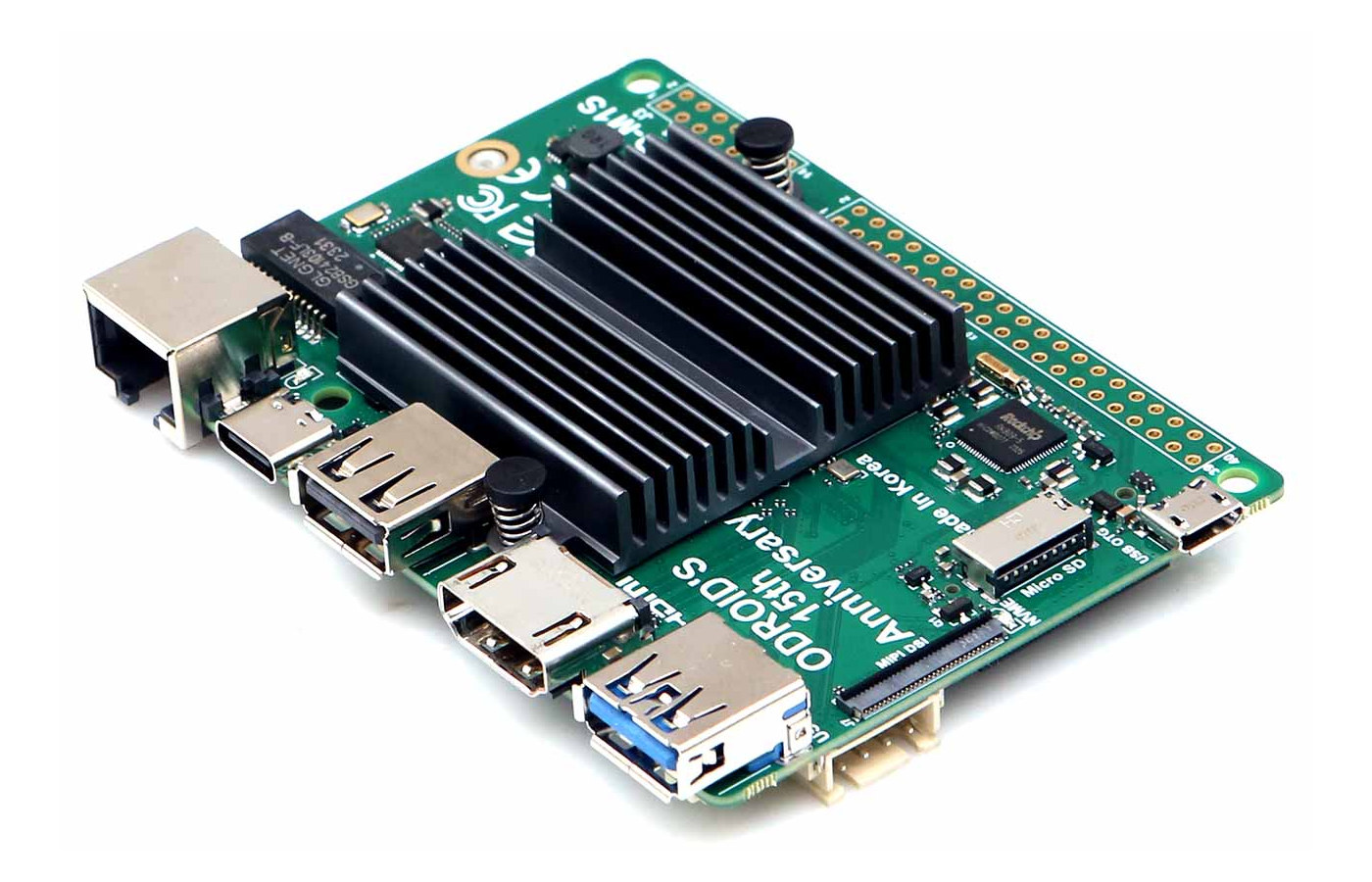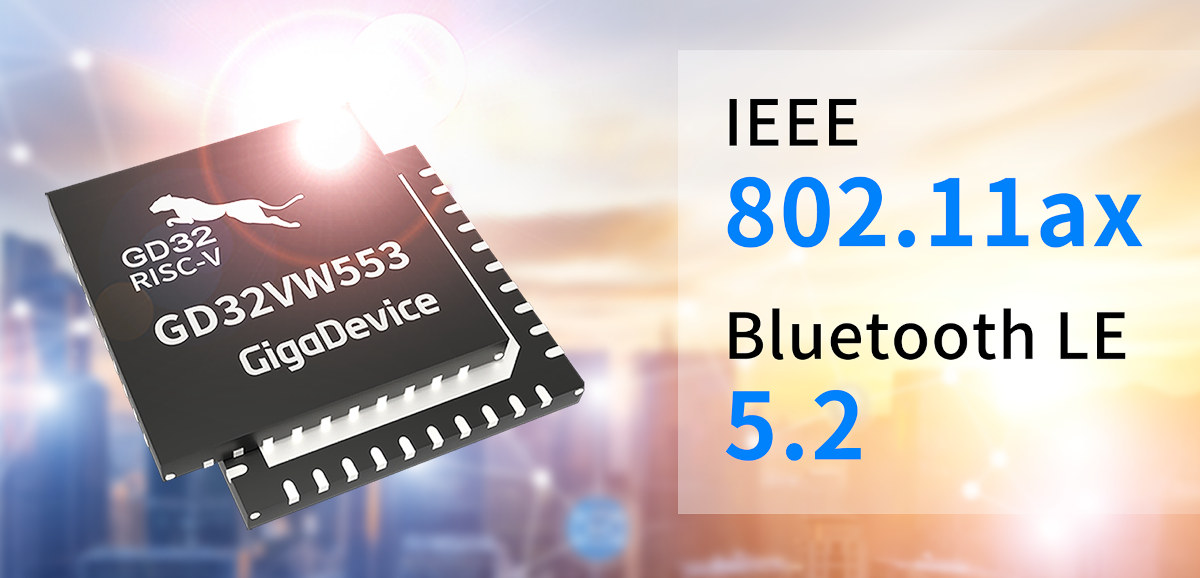LILYGO has designed plenty of ESP32 boards with an integrated display, but the new T-Display-S3-Long may be suitable for different applications since the ESP32-S3 board comes with a wide 3.4-inch touchscreen display with 640×180 resolution. The WiFi and Bluetooth wireless display board is powered by an ESP32-S3R8 WiSoC with 8MB PSRAM, and comes with a 16MB SPI flash, two Qwiic connectors and a 30-pin header for expansion, a USB Type-C port for power, charging, and programming, and a 2-pin connector for an optional LiPo battery. T-Display-S3-Long specifications: Wireless MCU – Espressif Systems ESP32-S3R8 dual-core Tensilica LX7 @ up to 240 MHz with vector instructions for AI acceleration, 512KB RAM, 8MB PSRAM, wireless connectivity Storage – 16MB flash (W25Q128) Connectivity via ESP32-S3 2.4 GHz 802.11 b/g/n Wi-Fi 4 with 40 MHz bandwidth support Bluetooth Low Energy (BLE) 5.0 connectivity with long-range support, up to 2Mbps data rate. Bluetooth Mesh 3D antenna […]
Arm Cortex-M52 aims to bring AI to small, low-cost IoT devices
Arm Cortex-M52 is a new microcontroller core featuring Arm Helium technology and designed to bring AI capabilities to smaller and lower-cost IoT devices than what is already possible with SoCs based on the Arm Cortex-M55 core. Arm Cortex-M52 key features and specifications: Architecture – Armv8.1-M Bus interfaces AMBA 5 AXI 32-bit or AMBA 5 AHB 32-bit Main system bus AMBA 5 AHB 32-bit Peripheral bus AMBA 5 AHB 32-bit TCM Access bus (subordinate port) Pipeline – 4-stage pipeline Security Arm TrustZone technology (optional), with optional Security Attribution Unit (SAU) of up to 8 regions. Stack limit checking. Optional support for PACBTI extension (Pointer Authentication, Branch Target Identification) Memory Protection – Optional Memory Protection Units (MPU) for process isolation with up to 16 MPU regions and a background region – if TrustZone is implemented, there can be a Secure and a Non-secure MPUs. DSP extension – 32-bit DSP/SIMD extension Optional single-beat […]
STMicro STM32WL3 sub-GHz wireless MCU targets smart metering, smart building, and industrial monitoring
STMicroelectronics STM32WL3 is an Arm Cortex-M0+ low-power, long-range, multi-protocol wireless microcontroller working in sub-GHz ISM frequency bands, namely 413MHz – 479MHz, 826MHz – 958MHz, and soon 169MHz (2024) for protocols such as wireless M-Bus (mode N) and Wize. The multi-protocol and multi-modulation radio supports 4-(G)FSK up to 600kbit/s, 2-(G)FSK, (G)MSK, DBPSK, DSSS, OOK, ASK modulation schemes suitable for proprietary and standardized wireless protocols such as Sigfox, KNX, WiSun, mioty, M-Bus, and others. STMicro also claims to have implemented new power-saving features that extend the battery life to up to 15 years. STM32WL3 key features and specifications: MCU Core – Arm Cortex-M0+ up to 64 MHz Memory – 16KB or 32KB SRAM with full retention Storage 128KB or 256KB flash 1 KB OTP flash (user data) Wireless RF bands – 413-479 MHz, 826-958 MHz, and soon 169 MHz Data rate – 0.1 to 600 kbit/s Tx power – up to […]
WeAct ESP32H2-N4 – A $6 Bluetooth 5.2 LE, Zigbee 3.0, and Thread development board
WeAct ESP32H2-N4 is a low-cost ESP32-H2 development board with Bluetooth 5.2 LE, Zigbee 3.0, and Thread connectivity with a design very similar to the one of Espressif Systems’ ESP32-H2-DevKitM-1 development board, but sold for just $5.70 plus shipping. The ESP32-H2 wireless microcontroller is basically the little brother of the ESP32-C6 without WiFi and aims at low-power nodes in short-range IoT networks. We have previously seen it in Espressif hardware like the aforementioned ESP32-H2-DevKitM-1 and the ESP Thread Border Router board combining ESP32-H2 & ESP32-S3 wireless chips, but so far not in third-party boards, and WeAct ESP32H2-N4 changes that. WeAct ESP32H2-N4 specifications: Wireless module – ESP32-H2-MINI-1 MCU – Espressif Systems ESP32-H2 32-bit RISC-V microcontroller at up to 96 MHz with 320 KB SRAM, 128 KB ROM, 4 KB LP memory, Bluetooth 5.2 LE/Mesh and 802.15.4 (Zigbee/Thread/Matter) radios. Storage – 4MB flash storage PCB antenna Dimensions – 13.2×16.6×2.4 mm USB – 2x […]
MessengerPi – A LoRa messenger and walkie-talkie based on Raspberry Pi RP2040 (Crowdfunding)
SB Components MessengerPi is a DIY messenger and walkie-talkie based on a Raspberry Pi RP2040 that relies on LoRa communication for P2P messaging over distances of up to 5 kilometers and calls up to 300 meters away. The company actually provides two boards: the MessengerPi itself for both calls and messaging with a keyboard, and the smaller “Walky Talky” board for audio communication only and without a LoRa module. Messenger Pi specifications: MCU – Raspberry Pi RP2040 dual-core Cortex-M0+ microcontroller @ 133 MHz with 264KB SRAM Storage – MicroSD card slot Wireless Ebyte E22-900T22S LoRa module (also used in the company’s LoRa HAT for Raspberry Pi) Based on the Semtech SX1262 transceiver Operates in the 850 MHz to 930 MHz band Up to 5km LoRa text messaging SB Components marked Walkie-Talkie module 16 FRS channels Tx Power – Up to 17 dBm Rx sensitivity – Up to -98dBm Audio communication […]
LILYGO T-Display S3 Pro – A 2.33-inch ESP32-S3 color touchscreen display with enclosure
LILYGO T-Display S3 Pro is another ESP32-S3 powered WiFi and Bluetooth display from the company with a 2.33-inch color touchscreen LCD, a plastic enclosure, support for USB-OTG, two QWIIC connectors, and a 470 mAh battery. We’re told the T-Display S3 Pro is an update to the T-Display S3 (and by extension of the T-Display S3 Touch and T-Display S3 AMOLED models) but the display is quite bigger at 2.33-inch and with higher resolution (480×222), it comes with an ABS case with an integrated battery by default, adds support for USB OTG, and also includes a few sensors that are missing from the earlier models. T-Display S3 Pro specifications: Wireless MCU – Espressif Systems ESP32-S3R8 dual-core Tensilica LX7 @ up to 240 MHz with vector instructions for AI acceleration, 512KB RAM, 8MB PSRAM, wireless connectivity Storage – 16MB flash, microSD card slot Connectivity via ESP32-S3 2.4 GHz 802.11 b/g/n Wi-Fi 4 […]
ODROID-M1S is a smaller, cheaper, and more efficient Rockchip RK3566 SBC with additional GPIOs
Designed for Hardkernel’s 15th anniversary, the ODROID-M1S is a smaller, cheaper ($49 and up), and more efficient single computer board compared to the ODROID-M1 single board computer introduced last year with a Rockchip RK3568 SoC. The new ODROID-M1S SBC features a Rockchip RK3566 SoC which is similar to the RK3568, but with fewer peripheral interfaces, 4GB or 8GB LPDDR4 memory, a 64GB eMMC flash solder on the board (instead of an eMMC flash connector), HDMI 2.0 and MIPI DSI video interfaces, gigabit Ethernet, a few USB ports, and two GPIO headers. It does lose a few features compared to the ODROID-M1, as its memory is clocked at a lower speed, the M.2 socket only supports PCIe 2.1, the SPI flash and SATA port are gone, and so is the MIPI CSI camera connector. The power supply has also changed from a 12V DC jack to a 5V USB-C port. ODROID-M1S […]
Gigadevice GD32VW553 RISC-V microcontroller supports WiFi 6 and Bluetooth 5.2 LE
Gigadevice GD32VW553 is a new 160MHz RISC-V microcontroller for IoT applications with support for WiFi 6 (802.11ax) and Bluetooth 5.2 Low Energy (LE) and available in QFN32 and QFN40 packages with up to 28 GPIOs. As an IoT chip, the chip supports various power modes and target wake time (TWT) for low power consumption, as well as WiFi features such as WPA3 and WiFi direct, while the radio can handle Bluetooth 5.2 LE bit rates of up to 2 Mbps and support the Long Range mode. Gigadevice GD32VW553 specifications: MCU core – 32-bit Nuclei N307 RISC-V core @ up to 160 MHz with RV32I / M / A / F / D / C / P / B instruction extensions Memory – 320KB SRAM Storage – 2048KB or 4096KB flash Wireless WiFI 6 802.11b/g/n/ax HT20 up to 114.7Mbps 802.11e QoS Enhancement (WMM). 802.11i (WPA, WPA2, WPA3). Open, shared key, and […]


